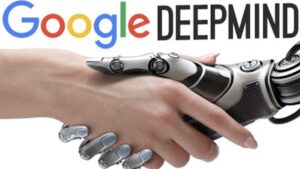AI Discovers Diamonds Independently

AI Breakthrough in Minecraft: Introducing Dreamer
Understanding the Achievement
An innovative artificial intelligence (AI) system named Dreamer has achieved a significant milestone by successfully collecting diamonds in the widely popular video game Minecraft. This accomplishment is remarkable because Dreamer learned how to gather these valuable items without prior instruction on how to play the game. According to experts, this development represents a crucial step towards creating machines capable of applying knowledge acquired in one area to new challenges—an essential objective in the field of AI.
Danijar Hafner, a computer scientist at Google DeepMind, remarked on the importance of Dreamer, stating, “It allows AI to comprehend its surroundings and improve independently over time.” This level of functionality without explicit directions from humans showcases Dreamer’s potential in advancing artificial intelligence.
Exploring the World of Minecraft
Minecraft is an immersive game set in a 3D virtual environment. Players navigate diverse terrains—ranging from forests and deserts to mountains and swamps—while utilizing in-game resources to create items. Among these creations, diamonds are highly sought after but require considerable effort and strategy to obtain.
One of the game’s unique features is its randomly generated worlds, ensuring that no two gaming experiences are ever the same. Hafner emphasizes that this unpredictability poses a challenge for AI systems, which need to demonstrate an understanding of dynamic circumstances rather than just memorizing strategies.
The Challenge of Collecting Diamonds
Acquiring diamonds in Minecraft is no easy task. It involves several complex steps, including locating trees, chopping them down for wood, and crafting tools necessary for mining deep underground, where diamonds are typically found. Achieving this requires players to navigate a series of milestones, making the diamond-collecting mission intricate.
While many previous AI attempts relied on observing human gameplay or guided instruction, Dreamer’s approach was markedly different. It employs a strategy called reinforcement learning, where the AI learns through trial and error by rewarding successful actions and disregarding unsuccessful ones. This technique forms the basis of many recent advancements in AI.
How Dreamer Works
The success of Dreamer hinges on its ability to construct a detailed “world model.” This model helps the AI to envision potential future scenarios based on its surroundings. Similar to human abstract thinking, this ‘world model’ doesn’t replicate the environment exactly but allows Dreamer to explore various possibilities. Consequently, it can foresee the potential rewards of different actions without expending the considerable computational resources needed to execute those actions in real-time.
Hafner explains that this predictive capability could significantly enhance robotics, enabling robots to learn how to interact with the real world, where trial and error can come with higher costs than in a gaming environment.
Testing the Algorithm
Interestingly, testing Dreamer on the diamond collection task was not initially planned. The research team developed the algorithm without this goal in mind. However, they later recognized that it provided a valuable opportunity to evaluate Dreamer’s effectiveness on an unfamiliar task, demonstrating its versatility and adaptive learning capabilities.
In summary, Dreamer represents a significant stride in AI development, particularly in the realm of complex environment interaction. Its ability to explore, learn, and adapt autonomously not only paves the way for future advancements in gaming AI but also speaks to the broader potential of AI systems in various fields.





